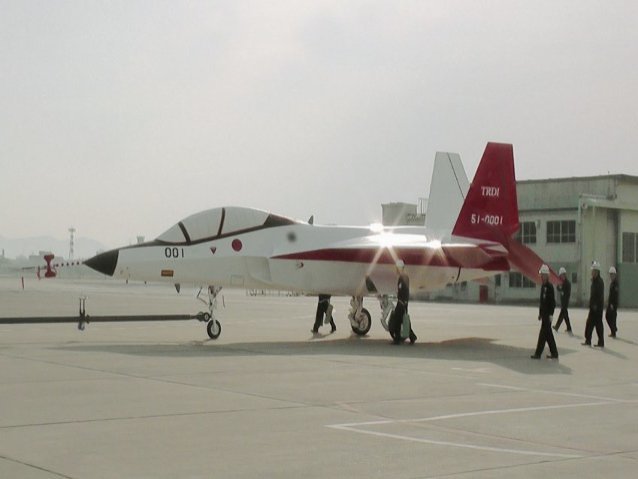Currently undergoing taxi trials in preparation for its first flight, Japan’s X-2 demonstrator has been in development since 2009 by the Japanese ministry of defence in cooperation with private contractors led by Mitsubishi Heavy Industry (MHI), which is responsible for designing and building the aircraft, and Ishikawajima Heavy Industries (IHI).
Ground testing is currently under way at Komaki Airport, near Nagoya. The demonstrator, which will not carry weapons, is intended to evaluate Japan’s capacity to produce a fifth-generation air superiority fighter, the F-3, for entry into service around 2030.
The project was conceived in large part in response to the US refusal to sell the F-22 to Tokyo. Initial research work, starting in 2006, involved a 1/5 scale flying mockup used to acquire performance data at high angles of attack, as well as to test new sensors and flight control systems. Based on preliminary test data, the project — designated ATD-X — received a government go-ahead and appropriate funding. Development costs of the X-2 demonstartor are estimated at 41.5bn yen (€310m).
The overall configuration shows features of the F/A-18 and the F-22. The airframe measures 14.2m in length with a wingspan of 9.1m — slightly smaller than the F-35. Twin 5t-thrust engines from IHI give the aircraft supercruise capability. Based on available data, maximum takeoff weight appears to lie in the 13t range.
Major innovations include a carbon fibre airframe, fibre optic flight controls and a thrust vectoring system similar to that of the Rockwell-MBB X-31, with three large computer-controlled “paddles” used to direct the engine exhaust flow. The aircraft is intended to be capable of automatically compensating for damage to flight contol surfaces, including the paddles, by adapting the control laws as a function of the estimated damage.
A variety of stealth shaping features are used to ensure reduced radar signature, particularly in the X, C and Ku bands : serrated edges on access panels (e.g. undercarriage bay doors), nose design, canted tail fins, and engine inlets designed to mask radar returns from the compressor blades.
A decision to go ahead with the F-3 programme is scheduled for 2018, possibly with international partners. Lockheed Martin, for one, is believed to be interested in participating in the programme. In any case, export sales will be vital, since the Japanese market (replacement of 96 F-2s) is clearly too small to cover the costs of the programme.

